RELATED NEWS
- Design and Brand Identity: A Conversation with Mario Ruiz
- Living in the open-air, the new space concept created by MUT Design for the Das Haus – Interiors on Stage installation at the imm cologne 2020
- Focus on Spain’s design: interview to Santiago Sevillano
- Focus on Spain’s design: interview to Sandra Figuerola
- Focus on Spain’s design: interview to Mario Ruiz
- Focus on Spain’s design: interview to Francesc Rife
- Focus on Spain’s design: interview to Nacho Lavernia
- Focus on Spain’s design: interview to Karim Rashid
TAGS
- design
- francesc rifé
- industrial design
- interior design
- interviews
- spanish design
Focus on Spain’s design: interview to Francesc Rife
Order and natural materials are key factors for Spanish industrial & interior designer Francesc Rifé (San Sadurní d’Anoia, 1969). Since he started his career in the design world in the ‘90s, he has been merging forms and planes, deepening perspectives through light and reflections, shaping his rigorous interiors with materials he is familiar with and in control of, in equal measure. In this interview we will learn more about his way of understanding spaces and objects and about his numerous collaborations with Spain’s best firms of design. Read on and enjoy!
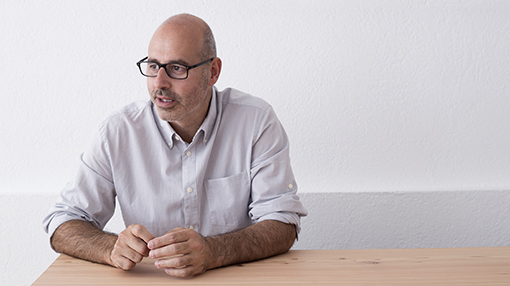
- Your experience in the design world begins in the ’90s when you was still a student and today it covers different fields, all related to creativity and design. Tell us about your work and your future challenges…
Life has given me the opportunity to enjoy of a creative milieu, we can almost speak of a philosophy, a way of understanding things, their functions and the aesthetics for which objects are recognized and admired. My work summarizes the way I understand things, spaces, light, order, simplicity, the luxury of space, in a word everything I need to feel alive and happy with what I do. At this stage of my life, I can say there is a coherent maturity in what I am developing, with strict criteria that adhere to this philosophy. In our work at the studio we strive to improve things, to make other people happy and their lives easier. And that’s what really motivates me now as a designer. My work is increasingly true to this philosophy that, far from any radical minimalism, tries to put a soul into the objects and spaces in order to personalize them as something timeless and free from extraneous decorations. We rather aim to promote a real interest for the history of things and the art while instilling technology in small doses. We just only need that clients share with us this experience.
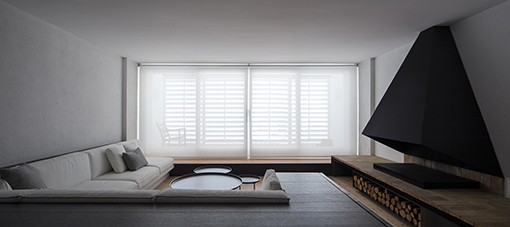
- “An interior design at the service of the architecture, and an architecture proportionated to its interiors”. These are your words to define one of your most emblematic residential projects, the House Cn. How do your projects really materialize and above all what inspires you? Can you define your style?
Projects have their own life and you have to find the aura that surrounds them, the inspiration is drawn from little nuances, the cultural history, the meaning, the problem raised. It’ important to get under the skin, the space or the function of the project, and be sure about what you are aiming at. Inspirations come mainly from your work experiences around the world. Sometimes you chance upon them, others they are the result of a more accurate research in the history, culture and all things related to the new entity. Travels, people, experiences, art, landscapes, the natural world can all be flashes of that inspiration sometimes so difficult to find. But once you got it, you soon make sense of your project. Within our studio we think that order and natural materials are key elements of our style. If you achieve to express yourself through materials and textures, you really can improve the “fragrance” of your project, give it a very high-quality yet timeless feel. As I usually say, order is an important issue of all my spaces. The real luxury is the space and therefore get things in the right place is key to turn the vacuum into a luxury atmosphere. A philosophy that integrates elements, simplifies things and keeps only the essential helps to formulate spaces in different ways, but always connecting the structure with its content and vice versa. This is the maturity of which we spoke earlier.
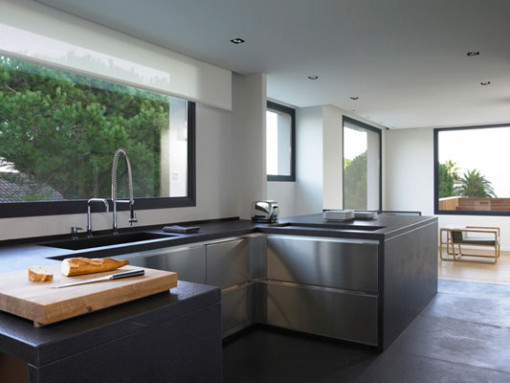
- When you work on a project, what comes first: shape, materials, colours, textures …?
I need to consider all these elements at once. I work in 3D. Projects are conceived as a whole, although they may suffer changes along the way, obviously.
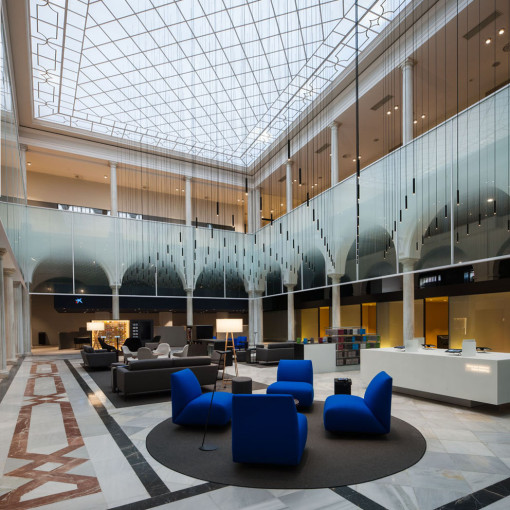
- You have worked in many national and international interior design projects and in all cases you always have the sensation that your designs go beyond the simple decoration of spaces, that you strive to find a balance of shapes, light and materials. What role plays furniture in your spaces and what guides your choice of pieces?
Part of the success of these projects, as I said earlier, is that space and its contents – be it furniture, lighting or decorative accessories – are totally connected. Our on going training over the years allows us to consolidate strongly this way of thinking. We avoid fashion trends and staging, opting instead for a more sober and rational space architecture, and a more timeless aesthetic. We have no problem in personalizing furniture or designing new pieces in order to achieve these results. Without any doubt, this is a way to make the project standing out from other commercial spaces and give it more relevance. Our task is to design carefully, trying to achieve a balance of forces, rather than insisting on every single detail.
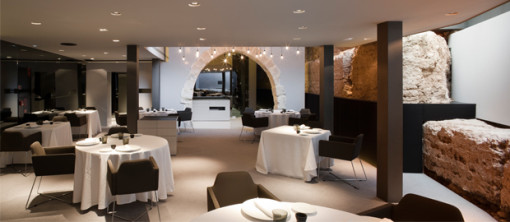
- You currently collaborate with many furniture and lighting companies: Ziru, Kendo, Marset, Capdell, Point, Koo International, just to name a few. For many of them you’ve created furniture that has been used in your interior design projects, often turning furniture items into key pieces of the whole decoration. We would like you to tell us how these collaborations are born and why sometimes they change into a more close-knit work relationship with the brand, almost an artistic direction…
In the first place, I created furniture for my spaces, rather looking for an overall philosophy than an industrial approach to objects. Over the time, we have realized that some pieces, which at first were created for a specific project, can be developed and turn into industrial products. Tha’s how our studio has developed also a specific competence for industrial design. Our collaboration with companies is always on long-term basis. I personally do not believe in one-time experiences. Products should be used properly and take advantage of an excellent communication strategy. It’s for this reason that sometimes we have collaborated as art director of brands we are used to work for. This is a key role which is rather common in the Italian industrial design sector, but not in Spain.
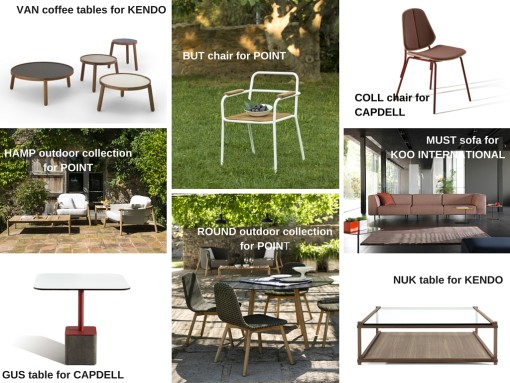
- Spain is a Mediterranean country, where light and climate influence the way in which people relate to each other and these, in turn, with objects, spaces, and the city itself. After so many years working in this sector, do you think we can speak of Spanish design, an aesthetic identity that defines us and differentiate Spain in an increasingly saturated product market? If so, is there some feature in your work that can somehow be related to it?
The market is saturated, it is true. But not the desire to create. As a result, further research into new fields allows to reinterpret things in new context. For example, LED technology has both simplified and reduced the lighting products. In the same way, the new developments in the way of using plastic or the new use of ceramics applied to architecture in general involve a constant renewal of products. The technology applied to home and work environments has led to a new approach to the use of furniture. Companies must adapt to changes; otherwise, they won’t be able to avoid being out of the market. Research and Development have to be at the heart of our companies’ strategy in order to beat competition and keep up with trends and market needs.
The globalization has been so forceful that has made it increasingly difficult to find large differences in the product of our societies. It seems to me that only strongly marked cultural features can add nuances to the design style.
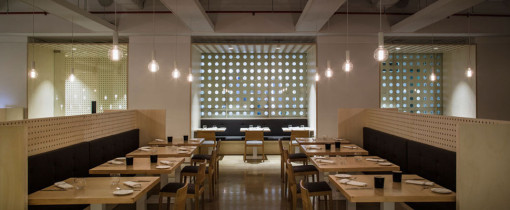
- You have worked in ambiences of great environmental and historical value (Caro Hotel, Arrop Restaurant, Central Bar …). How do you relate to tradition? Do you try to reinterpret it or you rather let yourself contaminate?
Tradition is the only thing we have left and we must take care of it, reinterpret it and improve its conditions in order to preserve it; obviously adapting it to our times. When you are commissioned to work with such a space, you immerse yourself in it, and you are naturally influenced by it. Personally, this is the kind of challenge I enjoy most and where I can contribute more. These spaces have “that something” that is difficult to explain; nevertheless, the space and the project grow in a very harmonious and special way. It’s the professional intervention that makes the difference and leads the way. I personally opt for maintaining and enhancing tradition.
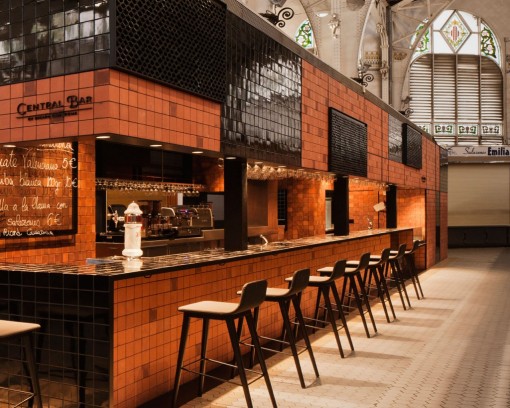
- They have been years of intense work and well-earned recognition. Today we can say that you have managed to carve out your own niche in the world of design. Your career as well has been recognized with several awards, including the World Contract Awards, ICFF Editors Awards, FAD Prizes and the ASCER Awards. You were also shortlisted for the National Design Awards and the Delta, among others. Is it so difficult to maintain your own style, the one that defines you as a designer, and at the same time meet the needs of your customers?
As I said before, our studio features a neutral and timeless design, based on order and geometric proportion. The personality of the client must connect with our way of conceiving spaces and objects. This is the reason why it is so important for us to establish a good understanding with our clients since the very beginning. The continuity in many of our collaborations confirms that the customers are satisfied and support our philosophy.
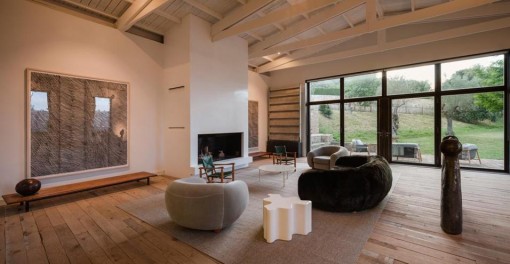
Have a look at the photo gallery of the L’Empordá House>>>
Read more about the L’Empordá House and Francesc Rifé in the e-mag Spanish projects / 9
For more info: www.rife-design.com
